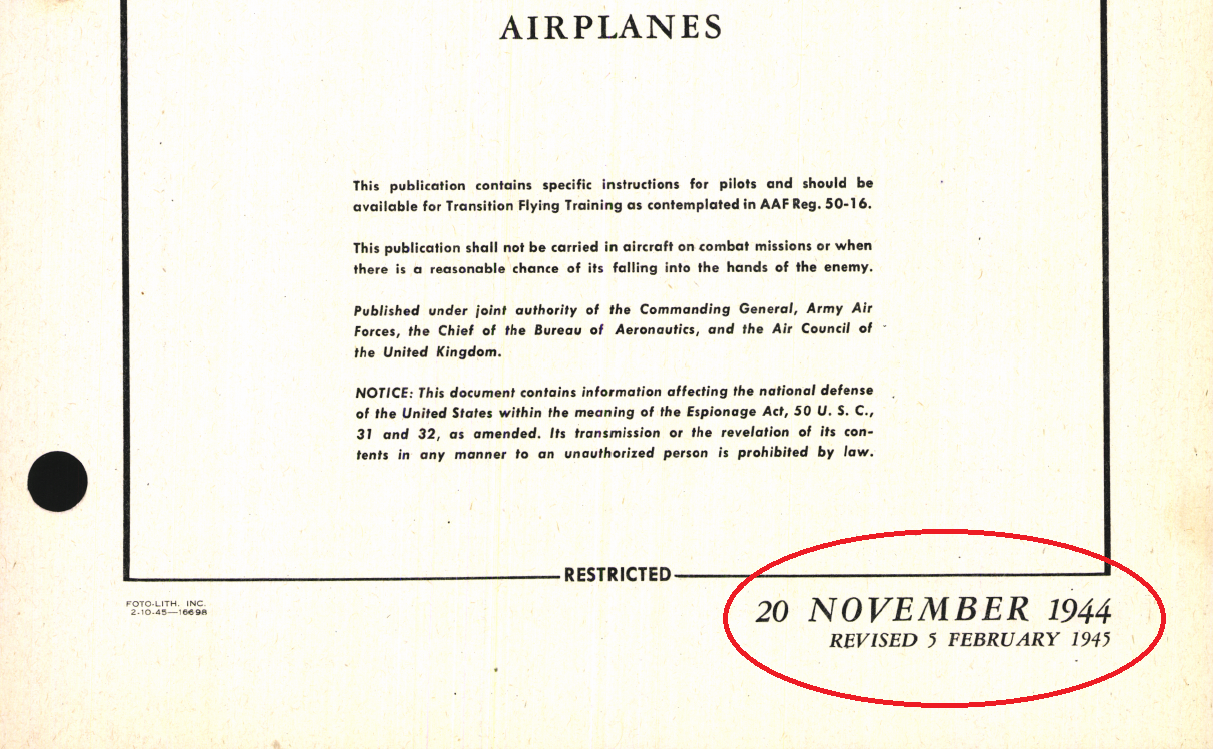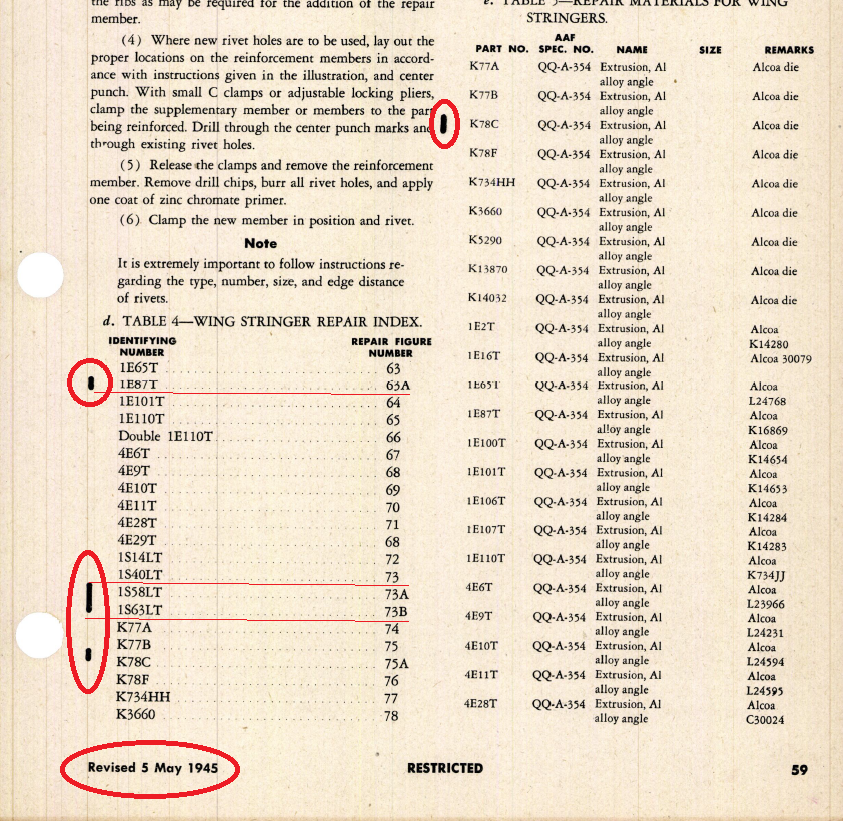Why we can never assume that a WWII era military published manual is complete
Understanding manual revisions is a key to making correct decisions about maintenance practices, aircraft operation, component overhaul, and more. Many of the questions that I get on a weekly basis at AirCorps Library have direct ties to the revision system that was in place during WWII. I briefly covered revisions in my blog back in October 2019 about the Latest Revision P-51D Manual Sets, but in this post we’re going to get much more detailed!
The “Cover Story”
Understanding the elements of the standard cover page of a military published manual is the first key to our discussion. The standard cover can be broken down into four main sections.
Document Number: For more detailed information on document numbers, check out my blog “WWII Military Technical Orders”
Type of Manual: The type of manual can be something specific like a “Parts Catalog” or “Overhaul Manual”, or can cover a variety of things like “Operation, Overhaul, and Service Manual with Parts Catalog”
Topic of Manual: Describes what make/model of an aircraft such as P-51 or P-47, or model of component, propeller, engine, etc. that is covered in the manual
Revision Information: Tells you when the manual was originally published, and if it was revised

Basic manual editions vs revisions
When you are thinking about revisions, it is important to make sure that you understand the difference between a “basic” edition manual, and a “revision”. A basic manual can be defined as the first time a manual was published. If a manual is a basic edition you will notice that it only has one date (in the bottom right corner of the cover). Revisions will have both a basic date, and a revised date, that is printed directly underneath.

Revision Packets
During WWII it was not economical to reprint an entirely new manual when only a handful of pages might need to be updated. For this reason, revisions were issued in what I call “revision packets”. Revision packets consisted of only pages that were changed, along with a new cover page that listed the new revision date.
The idea was that upon receiving a revision packet, the new pages would be inserted into their correct location within the basic edition of that manual, and the outdated pages were to be removed and destroyed. This process was to be ongoing - many manuals were revised multiple times, so, as you look through a manual you will often see a variety of revision dates listed on its pages.
Where the revision system failed - and how this worked to our benefit
As you might imagine, most mechanics didn’t always keep up with inserting newly revised pages into existing manual, which has left us today with manuals in a variety of states. Sometimes revised pages were added correctly, while other revision packets were simply placed on top of the basic edition manual they revised. In order for a manual to be considered a latest revision today, it would need to be verified that every page from every single revision packet was inserted into the correct place within the basic manual. See my blog on the Latest Revision P-51D Manuals for information on how to use the “list of revised pages” to accomplish this.
However, there is a definite benefit to the fact that mechanics were not always following strict instructions. If everyone would have destroyed past revisions, we would be missing an incredible amount of information today!
Why Revise?
Pages of manuals were revised for a variety of reasons. Information could have been updated for safety reasons, additional information was added that pertained to newly released models of aircraft or components, and occasionally, entire sections were omitted because they were no longer relevant. Often, information that has been either changed or omitted is very important in informing maintenance and restoration decisions in our present day shops.
How To Spot A Revision
Most individual pages that have been revised will have their revision date printed in the bottom margin, while pages that are original to the basic edition will have no date. The other way to see specifically what was changed on any given page is to look for black vertical lines in the left and right margin of a revised page. These lines indicate the exact area that was changed from the previous version, and make it very quick and easy to locate changes. Fun fact, the black vertical line is still used in modern aviation manuals to indicate a change!

Missing Pages & Multiple Copies
I often have AirCorps Library members ask me why there are pages missing from manuals on the website. Other than the fact that many of these manuals are going on 80 years old and could have lost pages along the way, it is more likely that a manual with missing pages is actually just a revision packet! I never intentionally remove pages from a manual when I upload them to the website - I add them just as I receive them. Revisions are also the main reason why you see multiple versions of the same manual on the website. I try to collect as many versions of the same manual that I can, to help fill missing page gaps, and so that AirCorps Library members can see how any given basic manual evolved during the course of its history.
In Closing
With the information above, it’s easy to see why most WWII era manuals are not complete. Using the “list of effective pages” and the “list of applicable publications” (see P-51 manual blog) for an aircraft or component, it is possible to do the research to determine what the date of a latest revision manual is, but it is equally important to remember that looking at one manual usually isn’t good enough. The more manuals and revisions you’ve looked at for any topic, the better chance you have of making a well informed decision about a restoration, maintenance, or operation question. For example, when I was compiling our latest revision manuals for the P-51, I had to acquire 9 different revisions of the maintenance manual in order to get all the pages that I needed that were the correct dates - not a quick and easy task.
Maybe the best advice I can give is to never assume that purchasing the manual with the latest date listed on the cover is all you need. You never know, it could be incomplete, or you could just be getting a handful of pages from a revision packet!
